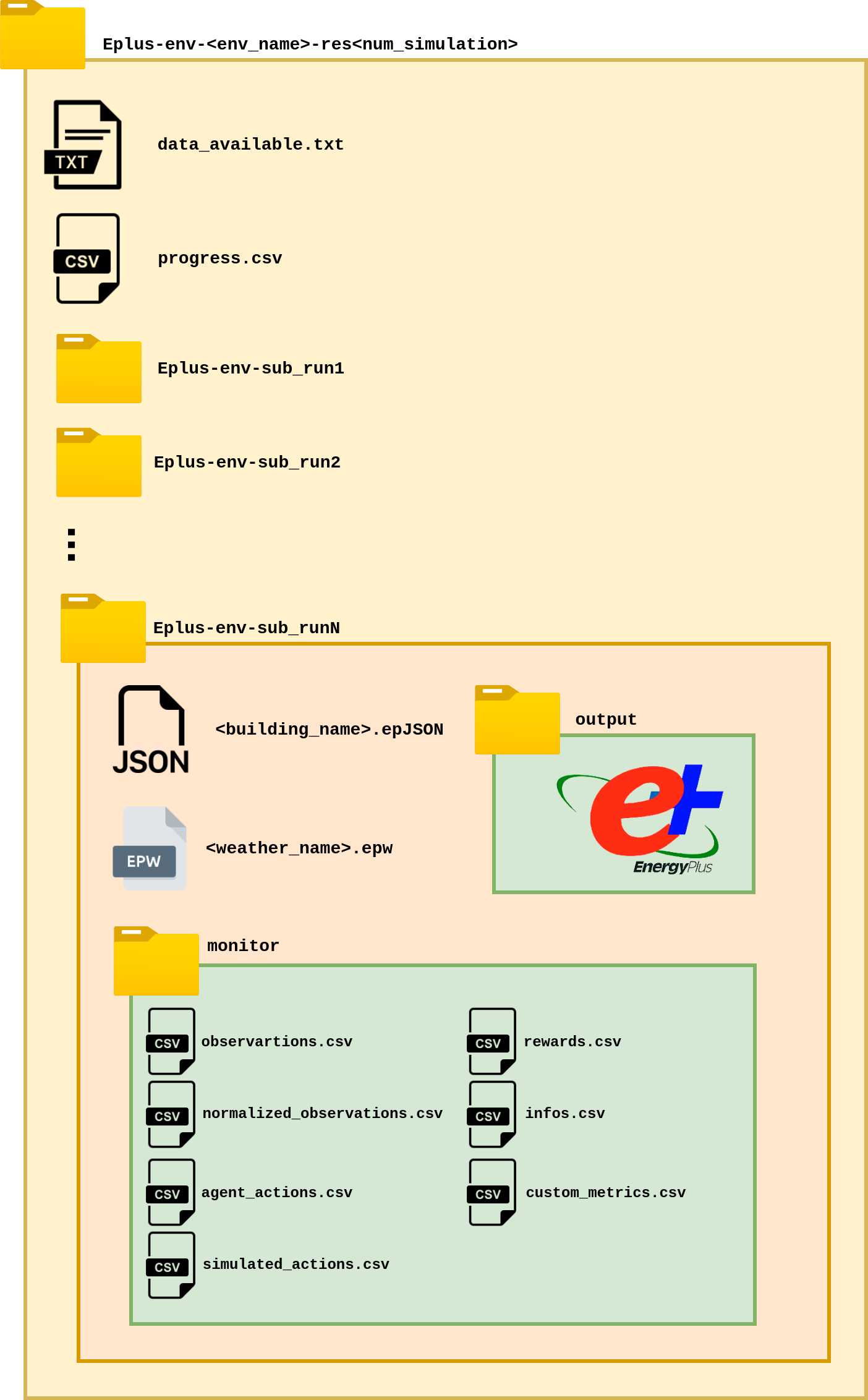9. Output format
When a simulation is running, it generates a directory named Eplus-env-<env_name>-res<num_simulation>.
The Modeling module also manages the directory tree generated during a simulation. The content of this
root output directory is the result of the simulation and includes:

Eplus-env-sub_run<num_episode> directories that record the results of each episode in the simulation. The number of these directories depends on the number of episodes and the maximum episode data value (see Maximum Episode Data Stored in Sinergym Output). Within these directories, the structure is always the same:
A copy of the environment.epJSON used during the simulation episode. This does not have to be the same as the original hosted in the repository, as the simulation can be modified to suit specific user-defined settings when building the gymnasium environment.
A copy of the Weather.epw used during the simulation episode. This file does not have to be the same as the original (when using variability).
monitor/: This records all Agent-Environment interactions during the episode, timestep by timestep. This directory only exists when the environment has been wrapped with LoggerWrapper and CSVLogger (see Logger Wrappers for more information). This directory as several CSV files depending on the data:
observations.csv: This file contains the observations of the environment at each timestep. The header is the observation variables names.
agent_actions.csv: This file contains the actions taken by the agent at each timestep. The header is the action variables names.
simulated_actions.csv: This file contains the actions executed in the simulation at each timestep. This values do not have to be the same as the agent actions, for example, when the environment has been wrapped with normalization in its action space.The header is the action variables names.
rewards.csv: This file contains the rewards obtained by the agent at each timestep.
infos.csv: This file contains the info dict of the environment at each timestep. The header is the info dict keys. Some of the info keys can be ignored depending on the CSVLogger configuration.
normalized_observations.csv: This file is only generated when the environment is wrapped with NormalizeObservation (see NormalizeObservation). The structure is the same as observations.csv, but the values are normalized.
custom_metrics.csv: This file only appears when the logger wrapper has a definition of this custom metrics. The header is the custom metric list names specified.
output/: This directory contains the EnergyPlus simulation output. To learn more about these files, visit the EnergyPlus Output File List.
progress.csv: This file contains information about general simulation results. There is a row per episode and it records important data such as mean power consumption, mean reward or mean comfort penalty, for example. This file only exists when the environment has been wrapped with a LoggerWrapper and CSVLogger, same as monitor folder (see Logger Wrappers for more information). The exact structure of this file is defined by the LoggerWrapper class.
data_available.txt: This file is generated when the EnergyPlus API initializes all callbacks and handlers for the simulation. In this file, you can find all the available components of the building model, such as actuators, schedulers, meters, variables, internal variables, etc.
Warning
Some lists of components, such as
Output:Variable’s, do not fully appear in data_available.txt because they must be declared in the building model first. If you want to see all the variables or meters specifically, you should look for them in the correct Energyplus output file. If you specify a correct variable in the environment, Sinergym will add theOutput:Variableelement in the building model before the simulation starts.